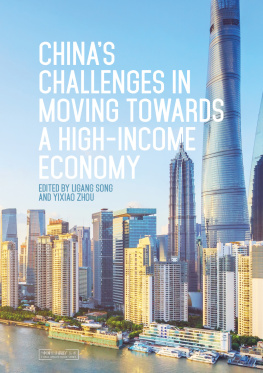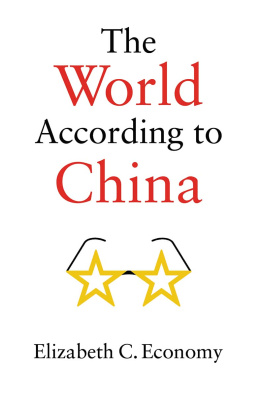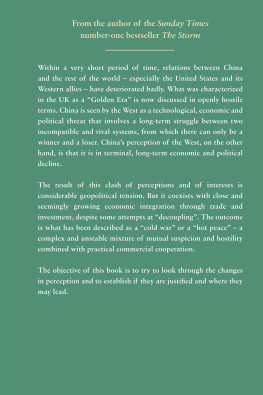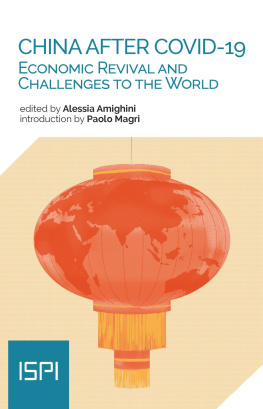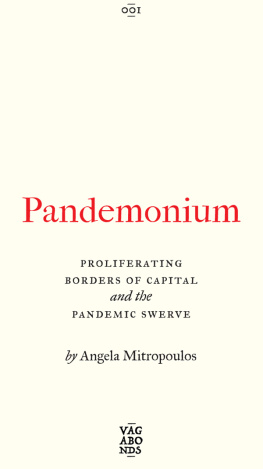Chinas Challenges in Moving towards a High-income Economy
Edited by Ligang Song and Yixiao Zhou

Published by ANU Press
The Australian National University
Acton ACT 2601, Australia
Email: anupress@anu.edu.au
Available to download for free at press.anu.edu.au
A catalogue record for this book is available from the National Library of Australia
ISBN (print): 9781760464523
ISBN (online): 9781760464530
WorldCat (print): 1263655300
WorldCat (online): 1263655305
DOI: 10.22459/CCMTHE.2021
This title is published under a Creative Commons Attribution-NonCommercial-NoDerivatives 4.0 International (CC BY-NC-ND 4.0).

The full licence terms are available at creativecommons.org/licenses/by-nc-nd/4.0/legalcode
Cover design and layout by ANU Press
This edition 2021 ANU Press
List of figures
List of tables
Contributors
Joel Bowman, The Australian National University
Shawn Xiaoguan Chen, University of Western Australia
Cai Fang, Chinese Academy of Social Sciences
Haoran Hu, Shandong University
Kunwang Li, Nankai University
Jia Peng, Chinese Academy of Social Sciences
Wang Ruimin, Development Research Centre
Niu Sanyuan, Development Research Centre
Rao Sihang, Peking University
Ligang Song, The Australian National University
Sizhong Sun, James Cook University
Shao Ting, Development Research Centre
Wang Wei, Development Research Centre
You Wu, Beijing Technology and Business University
Liu Xin, Development Research Centre
Liu Xingshuo, Peking University
Yanchao Xu, Yunnan University
Libo Yin, Central University of Finance and Economics
Sheng Yu, Peking University
Deng Yusong, Development Research Centre
Liqing Zhang, Central University of Finance and Economics
Yixiao Zhou, The Australian National University
Acknowledgements
The China Economy Program (CEP) at the Crawford School of Public Policy in The Australian National University (ANU) acknowledges the financial support provided by BHP for China Update 2020. We thank the program support and editing assistance provided by CEP Project Manager Timothy Cronin, Crawford School of Public Policy, and our colleagues from the East Asia Forum (EAF) at ANU. This is the 20th volume in the China Update book series. China Update 2020 provides a platform for leading researchers on the Chinese economy to discuss various issues relating to the challenges and opportunities in China moving towards a high-income economy. We sincerely thank our contributors for their valuable contributions to this years book. Thanks also go to ANU Press, notably Emily Tinker and Jan Borrie, for their expeditious publication of the book series every year. We thank the Social Sciences Academic Press (China) of the Chinese Academy of Social Sciences in Beijing for translating and publishing the Chinese version of the book each yearmaking this valuable research available to a wider readership.
Challenges and roadmaps for moving towards a high-income economy
Ligang Song and Yixiao Zhou
Chinas per capita income reached US$10,000 in 2019an important milestone in measuring the significant improvement in wellbeing for 1.4 billion Chinese people resulting from the decades-long program of reform and development. In the same year, Chinas total gross domestic product (GDP) reached US$14.3 trillion, accounting for 16.4 per cent of global GDP according to World Bank estimates, which matches closely to Chinas share of about 18 per cent of global population. Along with the rise in per capita income and total GDP, the Chinese economy witnessed some fundamental changes in the pattern of industrialisation, continuing to move towards high value-added production, trade and investment, progress on innovation and technological change and large-scale poverty reduction. These changes reflect some key features associated with a new and more advanced stage of growth and development. These structural changes are expected to continue to deepen and will allow China to accomplish its goal of becoming a high-income economy, which is one marked by a level of per capita income above US$12,270.
Dynamic changes in moving up the ladder of development
Chinas consistent, rapid economic growth over four decades was made possible by a good combination of economic reform and opening (Lin 2013a) and its demographic structure (Cai et al. 2018). The strong incentive effects of reform and opening matched so well with Chinas abundant supply of labour (initially low skilled, then shifting towards highly skilled at later stages of development) during the high-growth period in explaining the fundamental pattern of Chinas economic development (Li et al. 2012). Some key development lessons can be learned from this experience.
First, Chinas pattern of economic growth has centred on the development of manufacturing industries, which for a consistently long period drew significant investment despite contraction in its share in total investment in recent years (Figure 1.1). Investments in industry created employment, facilitated the unprecedented scale of urbanisation, established a comprehensive manufacturing base and turned China into an international industrial powerhouse through deepened international integration and specialisation at the beginning, following the East Asian manufacturing-based growth model in the 1970s and 1980s, and later through participating in global production networks (Kojima 2000; Lin 2013b). The development of manufacturing has had positive externalities as expounded by Kaldors growth laws, which say there is a strong positive correlation between the growth of manufacturing output and the growth of GDP, a strong positive correlation between the growth of manufacturing output and the growth of productivity in manufacturing, and a strong positive relationship between the growth of manufacturing output and the growth of productivity outside manufacturing (Thirlwall 2015). One empirical work using cross-provincial data from China has validated such growth laws in the Chinese context (Thirlwall 2011: 111).
Second, Chinas industrial sector development did not leave the development of the agricultural sector too far behind. In fact, Chinas agricultural sector has maintained record productivity growth throughout the reform period while going through its own transformation (Sheng and Song 2019). This allowed a continuously large number of migrant workers to move to the cities, while the rural sectors have become an important source of demand for industrial goods due to the steady rises in rural household incomes. The way in which industrial and rural development support each other through rural reform and urbanisation has led to rapid increases in income in both sectors, narrowing the income gaps between them. A significant change in government policy towards agriculture in 2005 saw for the first time in Chinese history the abolition of agricultural taxes, lessening the financial burden on farmers (Heerink et al. 2006), although much needs to be done to deepen rural reform, especially reforms of both leased and rural residential lands (Liu 2018). This is in sharp contrast to the experience of many developing countries, where industrial growth was achieved at least temporarily at the expense of rural sector development through policies of urban bias (Pugh 1996), which eventually dragged down their overall development as a result (Lipton 2007).

